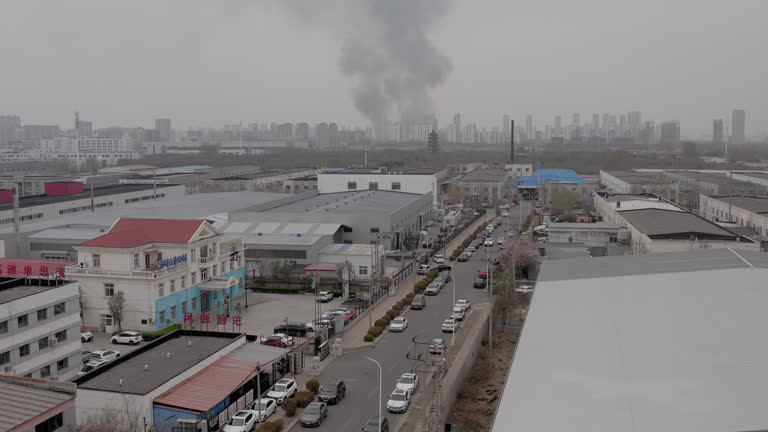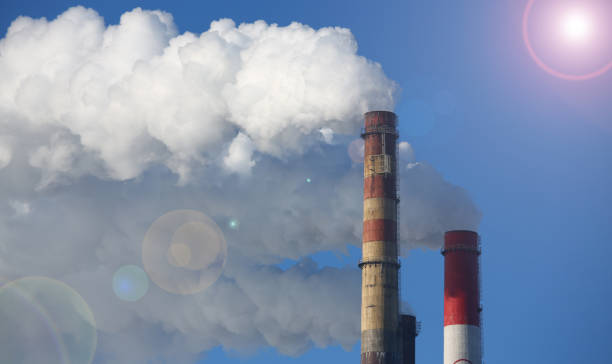Introduction
Air pollution is an insidious threat that poses significant risks to human health worldwide. With increasing industrialization and urbanization, the quality of the air we breathe has deteriorated dramatically. This deterioration has profound consequences for our well-being, affecting millions of people globally. Understanding the various health impacts of air pollution is crucial for individuals, communities, and policymakers to take appropriate actions to mitigate these risks.

What is Air Pollution?
Air pollution consists of harmful substances released into the atmosphere, including chemicals, particulates, and biological materials that can cause health problems. Common pollutants include particulate matter (PM), nitrogen dioxide (NO2), sulfur dioxide (SO2), carbon monoxide (CO), and ozone (O3). These pollutants originate from various sources such as vehicle emissions, industrial processes, power generation, and natural sources like wildfires and volcanic activity.
Immediate Health Effects
Respiratory Issues
One of the most immediate effects of air pollution is on the respiratory system. Short-term exposure to polluted air can lead to acute respiratory problems such as coughing, throat irritation, and shortness of breath. Individuals with pre-existing respiratory conditions like asthma or chronic obstructive pulmonary disease (COPD) are particularly vulnerable, as air pollutants can trigger asthma attacks and exacerbate COPD symptoms.
Cardiovascular Problems
Air pollution does not only affect the lungs; it also has significant impacts on the cardiovascular system. Studies have shown that short-term exposure to high levels of air pollution can increase the risk of heart attacks and strokes. Pollutants like particulate matter can enter the bloodstream, causing inflammation and contributing to the development of cardiovascular diseases.
Eye Irritation
Exposure to air pollutants can cause irritation of the eyes. Pollutants like nitrogen dioxide and particulate matter can lead to redness, itching, and watering of the eyes. For individuals who wear contact lenses, polluted air can be particularly uncomfortable and may lead to increased risk of eye infections.
Long-term Health Effects
Chronic Respiratory Diseases
Prolonged exposure to polluted air can lead to the development of chronic respiratory diseases. Conditions such as bronchitis, emphysema, and lung cancer have been linked to long-term exposure to air pollutants. The fine particulate matter can penetrate deep into the lungs, causing permanent damage and reducing lung function over time.
Cardiovascular Diseases
Long-term exposure to air pollution significantly increases the risk of developing cardiovascular diseases. Chronic exposure to pollutants like PM2.5 (particles smaller than 2.5 micrometers) and nitrogen dioxide can lead to chronic inflammation, which is a major risk factor for heart disease and stroke. Additionally, air pollution can contribute to the development of hypertension and atherosclerosis (hardening of the arteries).
Neurological Effects
Recent research has highlighted the potential neurological effects of air pollution. Chronic exposure to pollutants such as PM2.5 has been linked to cognitive decline and an increased risk of neurodegenerative diseases like Alzheimer’s and Parkinson’s disease. The exact mechanisms are still being studied, but inflammation and oxidative stress caused by air pollutants are believed to play a role.
Impact on Children’s Health
Children are particularly vulnerable to the effects of air pollution due to their developing organs and immune systems. Exposure to polluted air can lead to a range of health problems in children, including respiratory infections, asthma, and impaired lung development. Furthermore, there is evidence to suggest that air pollution can affect cognitive development and academic performance in children.

Impact on Pregnant Women and Infants
Air pollution poses significant risks to pregnant women and their unborn children. Studies have shown that exposure to high levels of air pollution during pregnancy is associated with adverse outcomes such as low birth weight, preterm birth, and developmental issues. Infants exposed to polluted air are also at higher risk of respiratory infections and sudden infant death syndrome (SIDS).
Mechanisms of Damage
Inflammation and Oxidative Stress
One of the primary ways air pollution affects health is through inflammation and oxidative stress. When pollutants like particulate
matter enter the body, they can cause the release of reactive oxygen species (ROS), which leads to oxidative stress. This oxidative stress can damage cells and tissues, triggering inflammation. Chronic inflammation is a known risk factor for many diseases, including cardiovascular diseases, respiratory conditions, and even certain cancers.
DNA Damage
Air pollutants can also cause direct damage to DNA. Substances like benzene, polycyclic aromatic hydrocarbons (PAHs), and heavy metals present in polluted air can bind to DNA and cause mutations. These mutations can lead to the development of cancer and other genetic disorders. The damage to DNA is particularly concerning because it can affect future generations if it occurs in reproductive cells.
Impaired Immune Function
Chronic exposure to air pollution can weaken the immune system, making individuals more susceptible to infections and diseases. Pollutants can alter the function of immune cells, reducing their ability to respond to pathogens effectively. This weakened immune response can lead to increased frequency and severity of infections, as well as longer recovery times.
Vulnerable Populations
Children and the Elderly
Children and the elderly are particularly vulnerable to the effects of air pollution. Children’s developing organs and immune systems are more susceptible to damage from pollutants, while the elderly often have pre-existing health conditions that can be exacerbated by poor air quality. Protecting these populations from air pollution is critical for their health and well-being.
Individuals with Pre-existing Health Conditions
People with pre-existing health conditions such as asthma, COPD, heart disease, and diabetes are at higher risk from air pollution. These conditions can be aggravated by exposure to pollutants, leading to more frequent and severe health episodes. For these individuals, maintaining good air quality is essential to managing their health.
Socioeconomically Disadvantaged Communities
Socioeconomically disadvantaged communities often experience higher levels of air pollution due to proximity to industrial areas, busy roads, and other pollution sources. These communities may also have limited access to healthcare and resources to mitigate the effects of pollution, making them particularly vulnerable to its health impacts.
Mitigating the Health Effects of Air Pollution
Policy Measures
Government policies play a crucial role in reducing air pollution and protecting public health. Implementing stricter emissions standards for industries and vehicles, promoting the use of clean energy sources, and enforcing regulations on pollutant levels are essential steps. Urban planning that includes green spaces and efficient public transportation can also help reduce pollution levels.
Personal Protective Measures
Individuals can take steps to protect themselves from air pollution. Using air purifiers at home, especially in areas with high pollution levels, can help reduce indoor air pollution. Wearing masks designed to filter out pollutants can also be effective, particularly on days with poor air quality. Staying indoors during high pollution periods and keeping windows closed can further reduce exposure.
Community Actions
Community actions, such as tree planting, promoting the use of bicycles, and advocating for better public transportation, can collectively reduce air pollution. Educating the public about the sources and health effects of air pollution can also encourage more people to take action to improve air quality.

Conclusion
Air pollution is a significant public health issue with wide-ranging effects on human health. From immediate respiratory and cardiovascular problems to long-term chronic diseases and neurological effects, the impact of polluted air is profound and far-reaching. Vulnerable populations, including children, the elderly, and those with pre-existing health conditions, are particularly at risk. Addressing air pollution requires a multi-faceted approach, involving government policies, personal protective measures, and community actions. By working together to reduce air pollution, we can protect our health and improve the quality of life for all.



